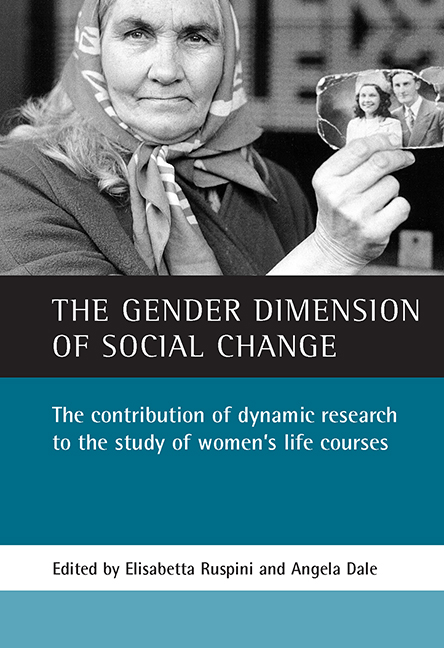 The Gender Dimension of Social Change
The Gender Dimension of Social Change three - Survey designs for longitudinal research
Published online by Cambridge University Press: 20 January 2022
Summary
What is longitudinal research?
‘Longitudinal’ is a rather imprecise term. It implies the notion of repeated measurements: the observations are made on a certain number of occasions (van der Kamp and Bijleveld, 1998, p 1; Taris, 2000). Thus, the term longitudinal refers to a particular type of relation between phenomena: the type which evolves over the course of time and is termed diachronic, and the opposite of synchronic. With longitudinal research, time regains its rightful place within the explanatory model (Menard, 1991):
• data are gathered over two, or more, successive periods (in the case of retrospective studies, data are collected through asking questions about the past – ‘retrospective questions’);
• either the same cases as before are analysed, or cases which can be directly compared with those from the previous period are studied;
• data are analysed by comparing the different periods: the linkage of data records for different time periods creates a longitudinal record for each observational unit.
Essentially, longitudinal research elicits data from the future for each observational unit. Moreover, where individuals are surveyed at successive time points or retrospectively, taken backwards in time, then it is possible to investigate how particular outcomes are related to the earlier circumstances of the same individuals. Therefore, longitudinal data recognise the temporal nature of individual behaviour. If we are to understand temporal tendencies in microlevel behaviour, then longitudinal research is essential (Davies and Dale, 1994).
There are many different methods that can be used to collect longitudinal data, resulting in many different types of research designs. The most commonly used longitudinal designs are:
• repeated cross-sectional studies (trend), which are carried out regularly, using a very different, or completely new, sample each time;
• prospective longitudinal studies (panel), that repeatedly interview the sane subjects over a period of time. This means surveying a given sample of individuals and/or households and following them over time with a sequence of rounds of data collection (or ‘waves’, as they are often termed);
• retrospective studies (duration data), in which interviewees are asked to remember, and reconstruct, events and aspects of their own life courses.
Of these three, prospective studies are considered the most ‘truly longitudinal’ (and are consequently preferred when analysing micro-social change), since they gather information about the same individuals who are asked an identical sequence of questions at regular intervals (Janson, 1990; Magnusson et al, 1991).
- Type
- Chapter
- Information
- The Gender Dimension of Social ChangeThe Contribution of Dynamic Research to the Study of Women's Life Courses, pp. 27 - 52Publisher: Bristol University PressPrint publication year: 2002


